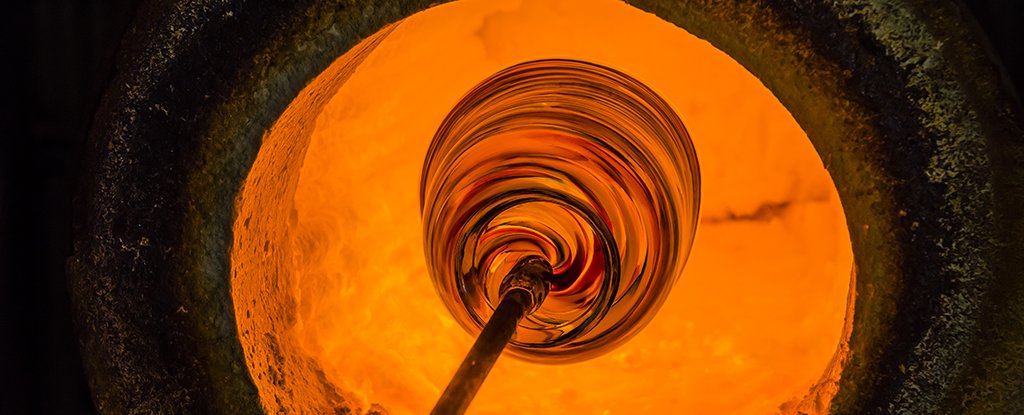
Physicists have discovered a new state of matter hidden in the mysterious transformations that take place between liquid and solid states of glass.
The glass transition has much of a fascination for scientists, and the new state of matter – called ‘liquid glass’ – exhibits microscopic-level behavior that has not been seen before, marking it as separate from previously observed phenomena.
This new state appears to exist between a solid and a colloid (like a gel): homogeneous mixtures with particles that are microscopic in size, but still larger than atoms and molecules, and easier to study. In this case, small custom plastic elliptical colloids were made and mixed together in a solvent.
“This is incredibly interesting from a theoretical point of view,” said Matthias Fuchs, a professor of soft condensed matter theory at the University of Konstanz in Germany.
“Our experiments provide the kind of evidence for the interplay between critical fluctuations and glassy arrest that the scientific community has been looking for for quite some time.”
When materials change from liquids to solids, their molecules usually form a crystalline pattern. Not so with glass, which is why scientists are so eager to analyze and deconstruct it: with glass (and glassy materials) the molecules are locked up or frozen in a disordered state.
In liquid glass, the scientists noticed that the colloids could move, but couldn’t rotate – they had more flexibility than the molecules in glass, but not enough to make them comparable to common materials that have already been extensively studied.
By using elliptical colloids instead of the standard spherical shapes, these locked rotations could be observed. The particles cluster together in groups with similar orientations, which then obstruct each other in the material.
 Elliptical particles in clusters in liquid glass. (Research groups of Professor Andreas Zumbusch and Professor Matthias Fuchs)
Elliptical particles in clusters in liquid glass. (Research groups of Professor Andreas Zumbusch and Professor Matthias Fuchs)
“Because of their different shapes, our particles have orientation – as opposed to spherical particles – that gives rise to entirely new and previously unstudied types of complex behavior,” explains Andreas Zumbusch, a professor of physical chemistry at the University of Konstanz.
The researchers say the new state of matter actually consists of two competing liquid-to-solid transitions that interact, creating a mixture of different properties. The shape and concentration of the particles seem to be crucial in making this liquid glass.
As always with glass transitions, many unanswered questions remain, but the study’s authors hope that the discovery of liquid glass – which scientists have predicted for 20 years – can help us better understand how glass transitions work in the smallest of scales.
The findings could also go well beyond glass, shedding light on everything from the smallest biological cell to the largest cosmological system – any scenario involving unexplained disorder.
“Our results provide insight into the interaction between local structures and phase transformations,” the researchers write in their paper.
“This helps guide applications such as self-assembly of colloidal superstructures and also demonstrates the importance of shape on the glass transition in general.”
The research is published in PNAS.